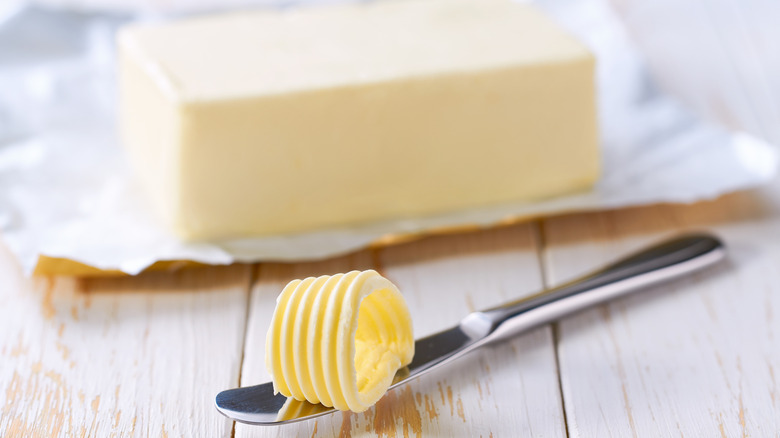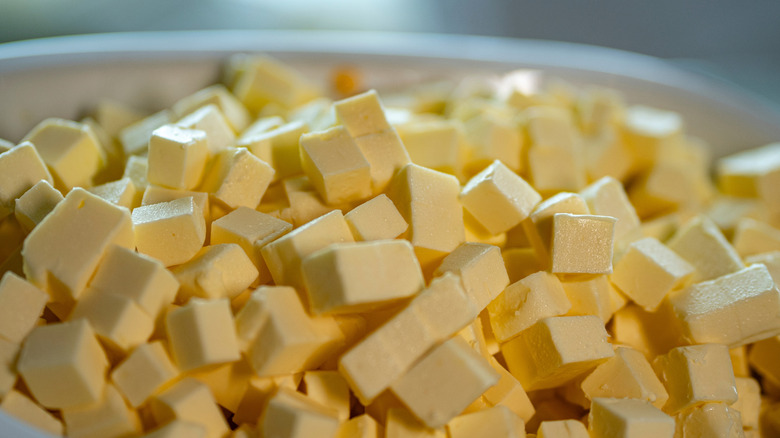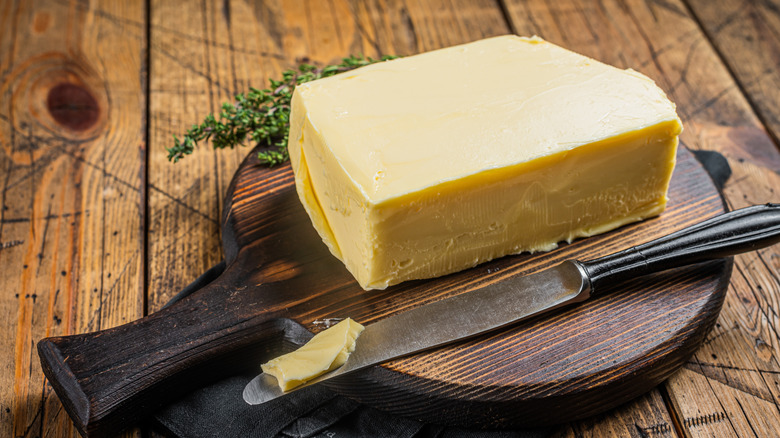The Right Way To Freeze Butter
Butter is a staple ingredient to have in your kitchen, be it for cooking or baking, so knowing the right way to freeze your butter for those big cooking days when you'll need it the most is an absolute must. The good news is that regardless of the type of butter — salted or unsalted — you can freeze butter for a long time and get effective use out of it when you do it right.
With salted butter, you get a whopping 12 months of use because of its natural preservatives and unsalted, you get 9 months. European-style butter will generally freeze the same way and can last 6 to 9 months.
The secret to freezing any type of butter is in airtight jars, plastic wraps, and aluminum foil. Wrap them in plastic wrap, or aluminum foil, or put it in an airtight jar, and surprise, they'll last you through those rainy days, with the flavor intact and no freezer burn. Buying in bulk? Use it directly from the freezer and defrost as you go.
Different methods to freeze butter
The way you freeze your butter depends on what you plan to use it for in the future. You can generally freeze them in sticks or cubes. To freeze your butter in sticks, simply leave it in the packaging it came in, or for added protection, put it in a plastic bag before freezing. You can say goodbye to freezer burn with this step and enjoy the flavor of your butter for a long time.
Now if you are feeling fancy and prefer to freeze your butter in cubes, first slice them into small cubes and then line them on a plastic wrap and seal the wrapped cubes in an airtight container to prevent them from absorbing moisture or any foul odor.
Since European-style butter has more fat, it requires extra wrapping to keep the flavor intact. To keep track of the storage period, be sure to label the butter with date tags and freeze it before the "Best By" date to enjoy the best taste and quality of the butter for a long time.
Thawing and using frozen butter
Now that you have your frozen butter, it's time to thaw it. Thawing your butter can be done simply by removing it from the freezer and transferring it to the fridge, or just leaving it on the counter. The gradual thawing helps maintain its quality.
However, if you are in a hurry, then you can grate the frozen cube or stick of butter as needed. This method works well for a buttery, flaky pie crust recipe, that requires cold butter for a flaky texture.
If you are working with a baking recipe that requires a softer consistency, leave it out for 1 to 2 hours until it is creamy for a perfect batter. And if your recipe requires melted butter, the microwave is the way to go. These techniques will allow you to incorporate your frozen butter easily, whether you are baking or cooking, while also maintaining its quality.


